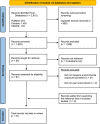A state-of-the-science review and guide for measuring environmental exposure biomarkers in dried blood spots
- PMID: 35963945
- PMCID: PMC9375076
- DOI: 10.1038/s41370-022-00460-7
A state-of-the-science review and guide for measuring environmental exposure biomarkers in dried blood spots
Erratum in
-
Correction to: A state-of-the-science review and guide for measuring environmental exposure biomarkers in dried blood spots.J Expo Sci Environ Epidemiol. 2023 Jul;33(4):672. doi: 10.1038/s41370-022-00488-9. J Expo Sci Environ Epidemiol. 2023. PMID: 36323920 Free PMC article. No abstract available.
Abstract
Background: Dried blood spot (DBS) sampling is a simple, cost-effective, and minimally invasive alternative to venipuncture for measuring exposure biomarkers in public health and epidemiological research. DBS sampling provides advantages in field-based studies conducted in low-resource settings and in studies involving infants and children. In addition, DBS samples are routinely collected from newborns after birth (i.e., newborn dried blood spots, NDBS), with many states in the United States permitting access to archived NDBS samples for research purposes.
Objectives: We review the state of the science for analyzing exposure biomarkers in DBS samples, both archived and newly collected, and provide guidance on sample collection, storage, and blood volume requirements associated with individual DBS assays. We discuss recent progress regarding analytical methods, analytical sensitivity, and specificity, sample volume requirements, contamination considerations, estimating extracted blood volumes, assessing stability and analyte recovery, and hematocrit effects.
Methods: A systematic search of PubMed (MEDLINE), Embase (Elsevier), and CINAHL (EBSCO) was conducted in March 2022. DBS method development and application studies were divided into three main chemical classes: environmental tobacco smoke, trace elements (including lead, mercury, cadmium, and arsenic), and industrial chemicals (including endocrine-disrupting chemicals and persistent organic pollutants). DBS method development and validation studies were scored on key quality-control and performance parameters by two members of the review team.
Results: Our search identified 47 published reports related to measuring environmental exposure biomarkers in human DBS samples. A total of 28 reports (37 total studies) were on methods development and validation and 19 reports were primarily the application of previously developed DBS assays. High-performing DBS methods have been developed, validated, and applied for detecting environmental exposures to tobacco smoke, trace elements, and several important endocrine-disrupting chemicals and persistent organic pollutants. Additional work is needed for measuring cadmium, arsenic, inorganic mercury, and bisphenol A in DBS and NDBS samples.
Significance: We present an inventory and critical review of available assays for measuring environmental exposure biomarkers in DBS and NDBS samples to help facilitate this sampling medium as an emerging tool for public health (e.g., screening programs, temporal biomonitoring) and environmental epidemiology (e.g., field-based studies).
Keywords: Biomarkers; Biomonitoring; Dried blood spots; Persistent organic pollutants; Trace elements; Environmental Tobacco Smoke.
© 2022. The Author(s).
Conflict of interest statement
The authors declare no competing interests.
Figures



Similar articles
-
Advancing Global Health Surveillance of Mycotoxin Exposures using Minimally Invasive Sampling Techniques: A State-of-the-Science Review.Environ Sci Technol. 2024 Feb 27;58(8):3580-3594. doi: 10.1021/acs.est.3c04981. Epub 2024 Feb 14. Environ Sci Technol. 2024. PMID: 38354120 Free PMC article. Review.
-
The use of dried blood spots for characterizing children's exposure to organic environmental chemicals.Environ Res. 2021 Apr;195:110796. doi: 10.1016/j.envres.2021.110796. Epub 2021 Jan 25. Environ Res. 2021. PMID: 33508256 Free PMC article. Review.
-
Quantification of cotinine in dried blood spots as a biomarker of exposure to tobacco smoke.Biomarkers. 2018 Feb;23(1):44-50. doi: 10.1080/1354750X.2017.1375558. Epub 2017 Sep 18. Biomarkers. 2018. PMID: 28862876
-
Quantification of arsenic, lead, mercury and cadmium in newborn dried blood spots.Biomarkers. 2013 Mar;18(2):174-7. doi: 10.3109/1354750X.2012.750379. Epub 2013 Jan 12. Biomarkers. 2013. PMID: 23311290 Free PMC article.
-
A simple method for direct mercury analysis in dried blood spots (DBS) samples for human biomonitoring studies.Environ Int. 2023 Jul;177:107958. doi: 10.1016/j.envint.2023.107958. Epub 2023 May 13. Environ Int. 2023. PMID: 37285712
Cited by
-
Cord Blood Adductomics Reveals Oxidative Stress Exposure Pathways of Bronchopulmonary Dysplasia.Antioxidants (Basel). 2024 Apr 20;13(4):494. doi: 10.3390/antiox13040494. Antioxidants (Basel). 2024. PMID: 38671941 Free PMC article.
-
Exposure to persistent organic pollutants in newborn dried blood spots and childhood acute myeloid leukemia.Environ Res. 2024 Mar 1;244:117954. doi: 10.1016/j.envres.2023.117954. Epub 2023 Dec 16. Environ Res. 2024. PMID: 38104918 Free PMC article.
-
Advancing Global Health Surveillance of Mycotoxin Exposures using Minimally Invasive Sampling Techniques: A State-of-the-Science Review.Environ Sci Technol. 2024 Feb 27;58(8):3580-3594. doi: 10.1021/acs.est.3c04981. Epub 2024 Feb 14. Environ Sci Technol. 2024. PMID: 38354120 Free PMC article. Review.
-
Per- and polyfluoroalkyl substances (PFAS) and thyroid hormone measurements in dried blood spots and neonatal characteristics: a pilot study.J Expo Sci Environ Epidemiol. 2023 Sep;33(5):737-747. doi: 10.1038/s41370-023-00603-4. Epub 2023 Sep 20. J Expo Sci Environ Epidemiol. 2023. PMID: 37730931 Free PMC article.
-
Dried Blood Spots to Assess Cardiovascular-Kidney-Metabolic Health.J Am Heart Assoc. 2025 Mar 18;14(6):e037454. doi: 10.1161/JAHA.124.037454. Epub 2025 Mar 13. J Am Heart Assoc. 2025. PMID: 40079345 Free PMC article.
References
Publication types
MeSH terms
Substances
Grants and funding
LinkOut - more resources
Full Text Sources
Medical

